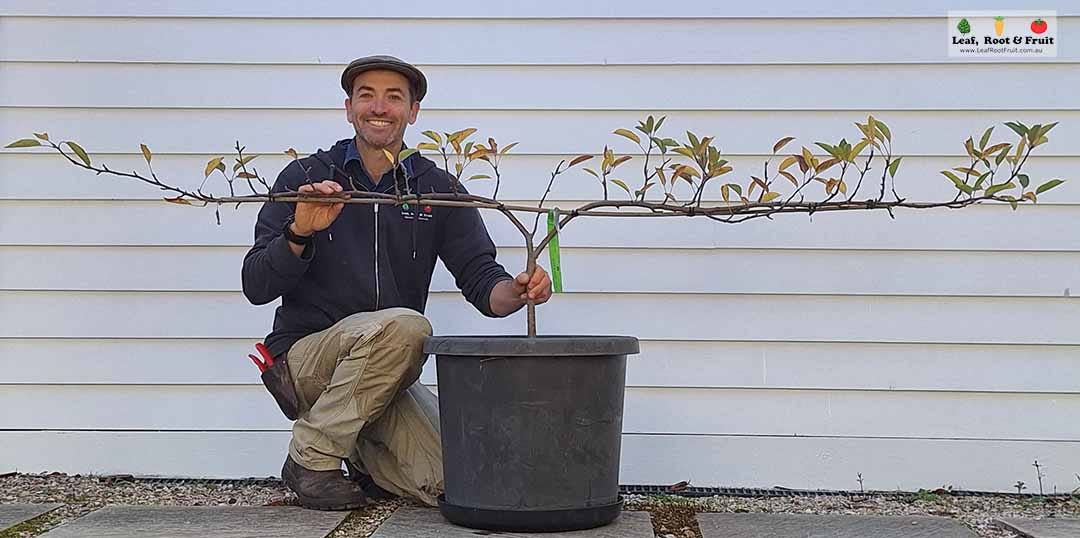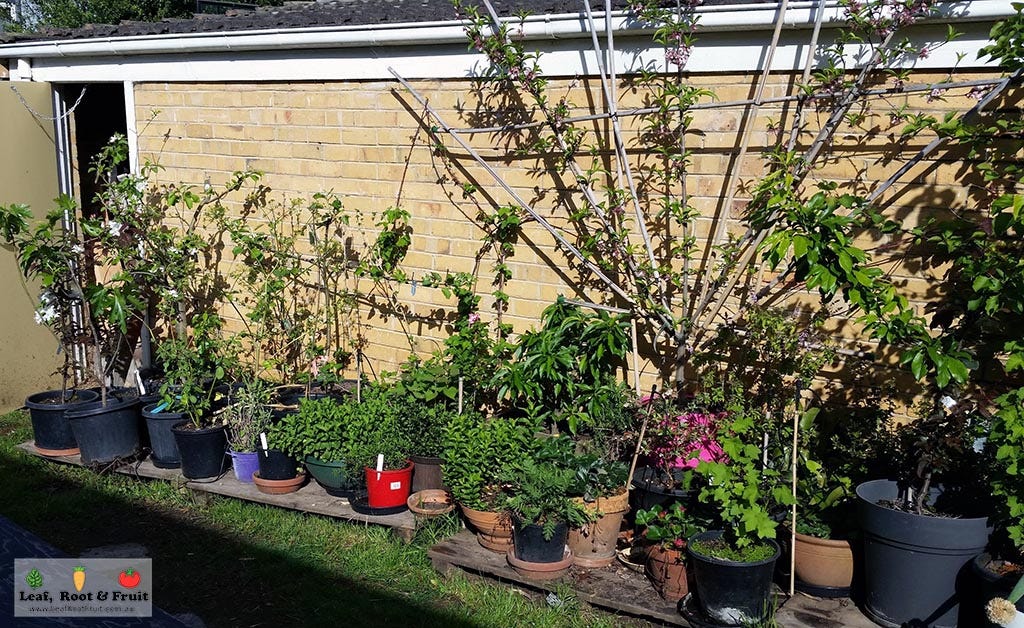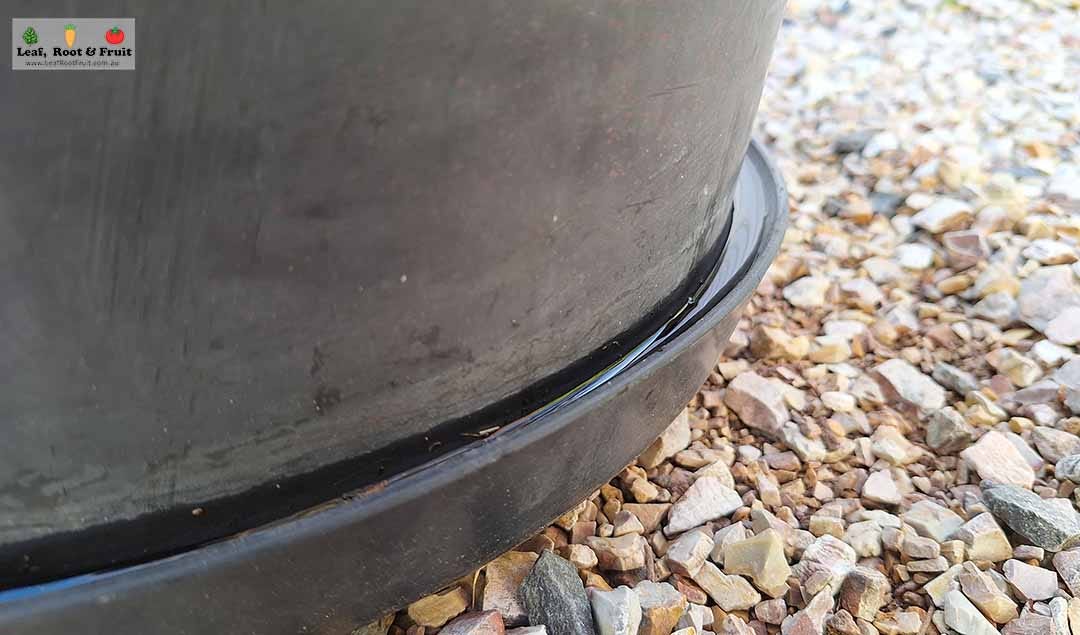A Guide to Growing Fruit Trees in Pots
Want to plant fruit trees in pots? Here are a few tips to help you get the most from them.
Last week I discussed the hidden cost of growing fruit trees in pots. In most circumstances I’d recommend focusing on growing blueberries or raspberries in pots instead.
You might be a renter, have terrible soil or just want to gain some experience with growing some trees in pots. Whatever the reason, here are a few tips for getting the most out of your potted fruit trees.
Want to learn how to graft your own fruit trees and save money? Come along to my upcoming Plant Propagation workshop this Saturday May 18.
Rootstock selection
Growing fruit trees in pots requires careful selection of rootstocks. Generally, aim for dwarf trees. The rootstocks on dwarf trees are not very vigorous. Therefore, they won’t become pot bound as quickly. This means you don’t have to pot them up as often.

Read more about rootstock selection here.
Variety choice
Grow varieties that you like to eat. Pay close attention to the timing of fruiting. Harvests from potted trees can be very small compared to those from trees growing in the ground, but spreading the harvest out can avoid gluts.
Read more about harvest timing and review my ripening chart here.
What sized pot should you use?
As a minimum I’d be using a 50cm pot for a bare-rooted or young fruit tree. As the tree grows you’ll need to pot it up. I do this repeatedly until I get to a 110L pot. After that the pots become too heavy and unmanageable. Some trees, such as apples on M9 rootstock, can be grown in smaller pots, but they won’t be very productive until they get some more room.
I know that some folks bare-root their trees (uproot them and wash the roots) and replace the potting mix every second year, instead of increasing the pot size. It is a bit more work, but it seems to work well for them.
In most cases, use a saucer
Adding a saucer underneath the pot has two advantages:
When potting mix becomes dry it repels water (becomes hydrophobic) and the water runs down the side of the pot and out the holes in the bottom. A saucer captures this water and allows it to infiltrate back up the soil profile via capillary action.
A potted fruit tree that has direct contact with the soil will soon send roots out the holes in the bottom of the pot and into the soil underneath. In three months you may struggle to move the pot. A saucer helps to break the connection between the potting mix and soil. Don’t make the rookie error that many have made before you.
I find that using a saucer creates waterlogging problems for some plants, such as blueberries. In this case forego the saucer but keep the pot off the soil with some bricks, tiles or similar.
Irrigation systems
All plants need water. Some more than others. Generally, deciduous fruit trees don’t need much water. Citrus trees need a lot.




